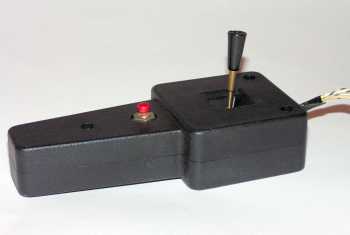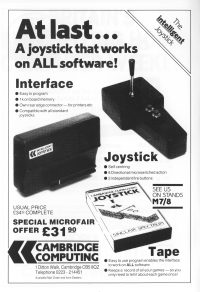 |
|||||||||||||||
|
|
|||||||||||||||
|
I first came across joysticks in the 1970s when our family acquired an Atari VCS console. These were crude digital ones with a single fire button mounted on base. Even then though I enjoyed dogfighting with the games on the Atari Combat cartridge. I used a variety of similar joysticks over the 1980s/90s mainly on an Atari ST. Despite the passing of the years - joystick technology didn’t advance much and no amount of futuristic styling could get over the limitations of the Atari joystick interface. The joysticks listed here though are PC ones and show quite nicely just how much joystick technology has advanced over the last 10 or so years.
This joystick is of the type often seen on home computers around 1980. At this time the Atari digital joystick had been around 3 or 4 years - but had not really made its mark outside of the game console market. This stick on the other hand is an analogue one - which provided more flexibility - but required a more complicated interface. The IBM PC introduced in 1981 was one of the first major adopters of analogue joysticks through the use of the PC Gameport which has only recently been superseded by the USB connection. For other computers though - joystick interfaces were often non existent. Joysticks like the one above were often the subject of DIY joystick interfaces which featured in the electronic magazines of the time. By chance I stumbled across this advert:
The joystick housing is obviously the same - but in this case it is a digital switch model with 2 instead of 1 fire buttons. The advert is from the “11th ZX Microfair Official Showguide” (held at Alexandra Palace in London on the 28th April 1984). Even though that is more than 20 years ago - this joystick design would have been considered a bit old fashioned even then - and was certainly not where the market was going.
|
|
All text and images Copyright © 2000-2011 Roland Givan, unless otherwise stated. All Rights Reserved. Game artwork copyright their respective publishers. |
|
[Home Page] [Joystick Parade] [Flight Sim Flypast] |

